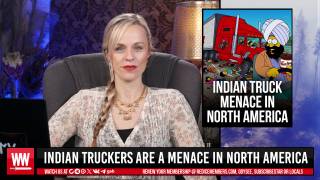India Goes Cashless
It certainly took everyone in India by surprise. But then, Prime Minister Narendra Modi has a flair for the dramatic. In an unexpected primetime address on Tuesday, he announced that in a few hours, millions of high-denomination currency notes would no longer be legal tender. It was the only way, he insisted, to deal with “the disease” of unaccounted-for income -- or “black money,” as it’s called in India. “Your money will remain yours,” he assured a stunned citizenry -- as long as you get around to depositing it in post offices sometime over the next several weeks.
As with everything the Indian government does, there’s a complex system of exemptions and exceptions to this demonetization. If you’re in an accident, for example, you can still pay the emergency room in 1,000-rupee notes. Also, for some reason, if you want to buy milk. Meanwhile, withdrawals from ATMs have been limited to 2,000 rupees a day for the next few days; returning bills to banks will require some form of government ID; and so on and so forth. Typically for India, a simple enough policy -- indeed, one perhaps too simplistic in conception -- somehow had enough fine print to confuse people.
Still, once India endures what could be a pretty chaotic transition, will Modi’s big idea work? There are certainly big advantages to going cashless. And black money in India is certainly a huge problem. The Indian economy is as much “informal” as it is formal -- meaning that most enterprises operate under the regulatory and legal radar. They don’t have to depend on bank accounts; cash payments are the norm. An unknown -- but certainly significantly large -- proportion of Indian national income is thus unaccounted for. It’s perhaps as much as a fifth of India’s GDP, or more than $450 billion.
Some of Modi’s more eccentric ideological fellow-travelers have long argued for a measure like this one, to force the informal economy toward formal finance and into the tax net. The yoga teacher-turned-tycoon Baba Ramdev, for example, has been agitating against high-denomination currency notes for years. And the idea of cash as the villain has percolated into the mainstream. The ex-CEO of Standard Chartered Plc. wrote a paper this February urging the G-20 to ban 500-euro, $100, and 50-pound notes, an idea backed by Larry Summers. Across Asia, countries are moving away from high-denomination notes: Korea plans to go cashless by 2020. Even a group of retired judges that the Indian government put in charge of examining the black money problem recommended cutting down on cash transactions.
But nobody expected Modi to act quite so decisively or quite as fast. His famed organizational skills were certainly on display: His cabinet decided, the prime minister addressed the nation and the governor of the Reserve Bank of India -- whose signature is on the notes, after all -- followed him on TV with a message of calm. And all this, without even a hint of the plan leaking out in advance.
In some ways, Modi’s hand was forced. One of his most potent promises when on the campaign trail in 2014 was to “bring back black money” from foreign tax havens. In spite of any number of press releases and a much-hyped amnesty scheme, he couldn’t live up to that promise. The amnesty in particular was a conspicuous failure, bringing in a tiny fraction of the money that Indonesia and Argentina have repatriated using similar amnesty windows.
With this announcement, Modi’s turned a political liability into a political success; there isn’t a voter in India who won’t know that their government’s taken a big step against tax evasion. Within seconds of the speech, I got a message on WhatsApp from my personal banker, calling the move a “surgical strike” against black money; the phrase drew a parallel with a widely popular attack by Indian soldiers last month on terrorist staging camps across the Line of Control in Kashmir.
Yet while a shortage of currency -- and remember, 500 rupees is only $7.50 -- might well make it harder to hide from the taxman, it will also make things much tougher for small businesses and for the poor. India’s a far-flung economy that lives in many centuries at once, and ATM cards or mobile payments may not have percolated far enough. There will probably be a price to be paid in efficiency -- and the poor will pay a disproportionate share of that price.
So while, in the end, a demonetization of this kind may have been necessary, it’s likely that Modi pushed it through a few years too soon. I’ve argued before that India has what it takes to become the world’s first cashless economy. But that will need the private sector to create the cheap and easy mechanisms for cash transfers using smartphones that would make cash redundant. And while that process is ongoing, and swift, it’s far from complete. India is closer to becoming a cashless economy, but the route there hasn’t been made any easier.






















